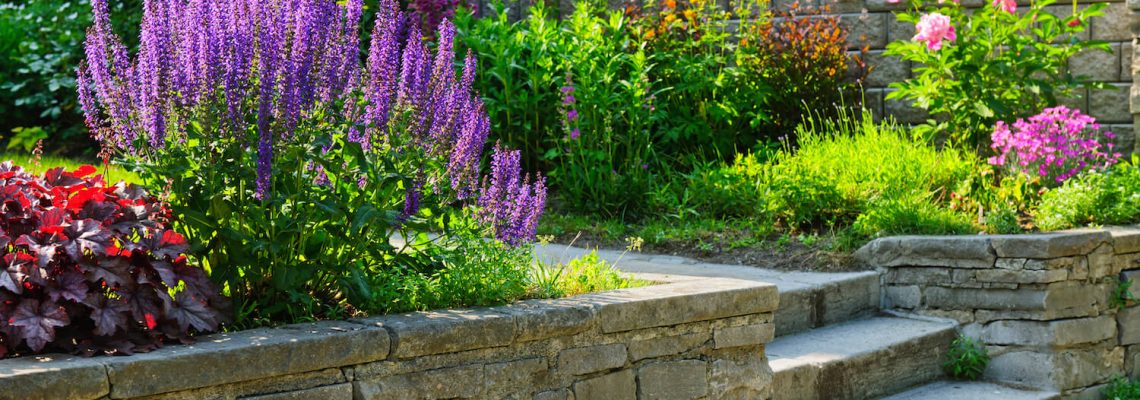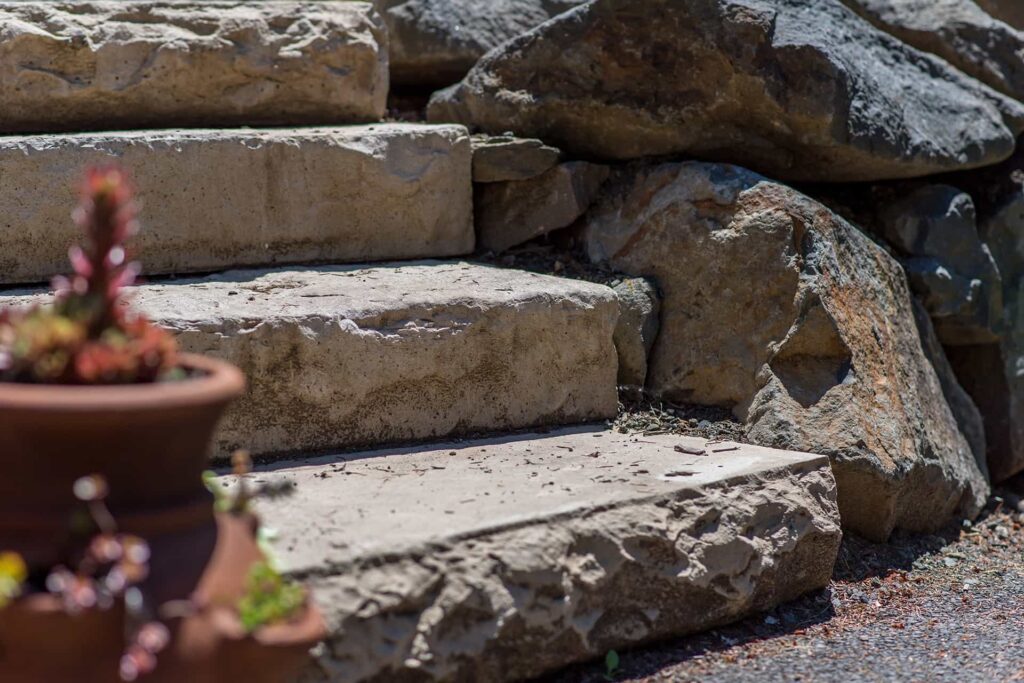The art of landscaping goes beyond mere aesthetics; it involves a thoughtful blend of functionality and beauty. In this pursuit, retaining walls stand out as versatile structures that not only add an element of style to outdoor spaces but also serve critical functional purposes. From preventing soil erosion to creating multi-level landscapes, retaining walls are a fusion of strength and style that can transform the look and feel of any property.
In this article, we delve into the benefits of retaining walls, exploring their diverse uses, materials, and design considerations.
Erosion Control Benefits and Soil Stability
One of the primary functions of retaining walls is to control erosion and stabilize soil on sloped landscapes. When heavy rainfall or natural gradients cause soil to shift downhill, it can lead to the loss of valuable topsoil and create uneven surfaces. Retaining walls act as barriers, holding back soil and preventing erosion. This not only protects the landscape but also maintains the integrity of structures and plantings on the property.
Retaining walls are particularly beneficial on properties with varying elevations. By creating terraced levels, these walls help to slow down water runoff, allowing it to be absorbed into the soil. This, in turn, reduces the risk of erosion and provides a stable environment for vegetation to flourish.
Functional Terracing for Aesthetic Appeal Benefits
Beyond their utilitarian purposes, retaining walls contribute significantly to the visual appeal of outdoor spaces. By incorporating terraced levels into the design, retaining walls create an interesting and dynamic landscape. This is especially advantageous for properties situated on hills or slopes, where traditional landscaping might be challenging.
The tiered effect of retaining walls allows for the creation of distinct zones within a landscape, providing opportunities for different types of plantings, seating areas, or even water features. This functional terracing not only enhances the aesthetic appeal of the space but also makes it more usable and accessible.
Increased Usable Landscaping Space
One of the often-overlooked benefits of retaining walls is their ability to maximize usable space on a property. In areas with steep slopes or uneven terrain, creating flat, stable surfaces can be a challenge. Retaining walls offer a solution by transforming steep inclines into level surfaces, making previously unusable areas suitable for various activities.
Homeowners can capitalize on this newfound space by installing patios, gardens, or even outdoor seating areas. This not only adds value to the property but also enhances the overall living experience. The increased usable space provided by retaining walls opens up a world of possibilities for homeowners to customize their outdoor areas to suit their preferences and needs.
Structural Support and Stability
Retaining walls provide essential structural support in areas where the natural topography might pose a threat. For properties situated on hills or slopes, the force exerted by the earth can be significant. Retaining walls act as a barrier against this pressure, preventing soil movement and potential damage to structures.
The choice of materials for retaining walls plays a crucial role in determining their strength and stability. Common materials include concrete, stone, brick, and timber. Each material has its unique characteristics, allowing homeowners to select the one that best complements the overall design of the property while providing the necessary structural support.
Endless Design Possibilities
The versatility of retaining walls extends to their design possibilities. Whether homeowners prefer a modern, sleek look or a more rustic, natural appearance, retaining walls can be customized to suit various styles. The choice of materials, colors, and textures allows for a wide range of design options.
For a contemporary aesthetic, concrete or brick retaining walls with clean lines and a smooth finish are popular choices. On the other hand, natural stone walls lend a timeless and organic feel to the landscape. Incorporating plantings along the walls or integrating lighting fixtures can further enhance the visual appeal, turning retaining walls into integral elements of the overall design.
Efficient Drainage Management
Proper drainage is a critical aspect of landscape design, and retaining walls can play a key role in efficient water management. By controlling the flow of water on sloped surfaces, retaining walls help prevent water accumulation and erosion. This is particularly important in regions prone to heavy rainfall or flash floods.
Some retaining walls are designed with built-in drainage systems to redirect water away from the structure and surrounding areas. This not only safeguards the integrity of the walls but also contributes to the overall health of the landscape by preventing waterlogging and soil erosion.
Increased Property Value Benefit
The investment in retaining walls goes beyond immediate functional and aesthetic benefits; it can significantly increase the overall value of a property. Potential buyers are often attracted to well-designed landscapes that are not only visually appealing but also address practical concerns such as erosion control and stability.
A property with strategically placed retaining walls showcases a commitment to thoughtful landscaping and can stand out in a competitive real estate market. The added usability and aesthetic enhancements offered by retaining walls contribute to a higher perceived value, making them a worthwhile investment for homeowners looking to improve both their living spaces and property resale value.
Environmental Considerations
In addition to their functional and aesthetic advantages, retaining walls can have positive environmental impacts. When strategically placed, these walls can contribute to soil conservation, preserving the natural landscape and preventing the degradation of ecosystems. By controlling erosion and promoting water absorption, retaining walls aid in maintaining a healthy balance in the surrounding environment.
Moreover, the incorporation of green or living walls—a trend gaining popularity in sustainable landscaping—adds an ecological dimension to retaining wall design. These walls are adorned with vegetation, not only enhancing the visual appeal but also promoting biodiversity. Native plants can be introduced, providing habitats for local wildlife and contributing to the overall ecological health of the area.
Seasonal Outdoor Adaptability
Retaining walls are designed to withstand the test of time and adapt to seasonal changes. In regions with harsh climates, the freeze-thaw cycle can pose challenges to outdoor structures. Well-constructed retaining walls, using materials resistant to temperature fluctuations, provide stability throughout the seasons. This adaptability ensures that the walls remain effective in erosion control and structural support, regardless of weather conditions.
Furthermore, retaining walls can be designed to integrate seamlessly with seasonal changes in landscaping. Consideration of seasonal blooms, foliage color changes, or even temporary additions like outdoor furnishings can make retaining walls dynamic elements that evolve with the natural rhythm of the environment.
DIY Versus Professional Installation
While retaining walls can be a rewarding addition to any property, the decision between a do-it-yourself (DIY) installation and hiring professionals depends on various factors. Small, decorative walls may be suitable for a DIY project, especially for homeowners with some landscaping experience. However, larger walls or those serving critical functions, such as structural support, are best left to experienced professionals.
Professional installers bring expertise in engineering, drainage considerations, and material selection. They can ensure that the retaining walls not only meet aesthetic preferences but also adhere to safety standards and local regulations. Investing in professional installation provides peace of mind, knowing that the retaining walls will serve their intended purpose effectively and durably.
Conclusion
In conclusion, retaining walls emerge as dynamic elements in the world of landscaping, blending form and function in a harmonious union. Their multifaceted benefits, ranging from erosion control and structural support to increased usable space and environmental considerations, make them indispensable in outdoor design.
As homeowners increasingly seek ways to enhance the beauty and functionality of their outdoor spaces, retaining walls stand as a testament to human ingenuity in working with the natural environment. Their adaptability, versatility, and aesthetic potential ensure that retaining walls will continue to shape landscapes, offering a perfect fusion of strength and style for generations to come. Whether transforming a backyard into a terraced oasis or providing essential support for a hillside property, retaining walls exemplify the art of landscaping that marries practicality with visual appeal.


